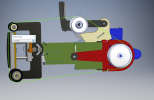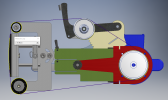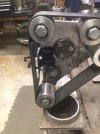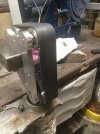kuraki
Fimbulvetr Knifeworks
- Joined
- Jun 17, 2016
- Messages
- 4,679
So, here's one of my concerns. I threw the current revision into my new grinder design and even butting up the platen side to the point of interfering with the grinder, I still end up with a 73"+ belt loop. Now that's easy enough for me to modify as I've not yet built this grinder and it's a little long in the front anyway, but are other people going to have this issue with the conglomeration of various tracking wheel heights and various sized drive wheels and distance from drive wheel to front face of tool arm sockets?






